While working on a project translating letters from sixteenth-century Prague, high school senior Nora Kane discovers her best friend murdered with her boyfriend the apparent killer and is caught up in a dangerous web of secret societies and shadowy conspirators, all searching for a mysterious ancient device purported to allow direct communication with God.
Czech Republic
Materials from Czech Republic
The Jewel of the Kalderash
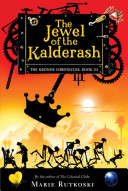
Fourteen-year-old Petra, her tin spider Astrophil, and their friends become entangled in the competition for the Roma crown, then set out for Prague in hopes of finally finding a cure for Petra’s father.
Requiem: Poems of the Terezin Ghetto
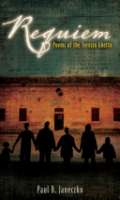
Paul B. Janeczko’s stirring new collection of poems goes inside the walls of the notorious camp to portray the indomitable spirit of those incarcerated there. Hitler hailed Terezin (Theresienstadt) as a haven for artistic Jews, when in reality the Czech concentration camp was little more than a way station to the gas chambers. In his second book inspired by devastating history, acclaimed poet Paul B. Janeczko gives voice to this heartrending creative community: its dignity, resilience, and commitment to art and music in the face of great brutality. The many memorable characters he conjures include a child who performs in the camp’s now famed production of Brundibar, a man who lectures on bedbugs, and a boy known as “Professor,” who keeps a notebook hidden in his shoe. Accented with dramatic illustrations by the inmates, found after WW II, Janeczko’s spare and powerful poems convey Terezin’s tragic legacy on an intimate, profoundly moving scale.
Broucci
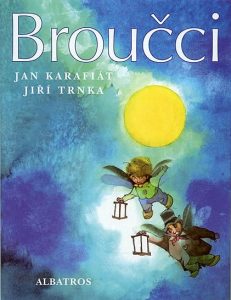 Broučci is a classic children’s book by Jan Karafiát published in the Czech language in the early 1870s. The title is the Czech word for beetles, and the word is also used for “traditional Czech figures of fairylike insect people”[2] such as the characters in the book. In English, the title is often translated as Fireflies.
Broučci is a classic children’s book by Jan Karafiát published in the Czech language in the early 1870s. The title is the Czech word for beetles, and the word is also used for “traditional Czech figures of fairylike insect people”[2] such as the characters in the book. In English, the title is often translated as Fireflies.
Golem
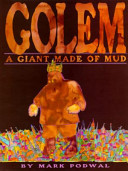
A retelling of the Jewish legend of the golem created by the Rabbi to defend the Jews of Prague
Terezin
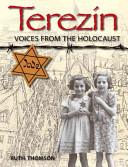
Through inmates’ own voices and artwork, Terezin explores the lives of Jewish people in one of the most infamous of the Nazi transit camps. Between 1941 and 1945, Nazi Germany turned the small town of Terezin, Czechoslovakia, into a ghetto, and then into a transit camp for thousands of Jewish people. It was a “show” camp, where inmates were forced to use their artistic talents to fool the world about the truth of gas chambers and horrific living conditions for imprisoned Jews. Here is their story, told through the firsthand accounts of those who were there. In this accessible, meticulously researched book, Ruth Thomson allows the inmates to speak for themselves through secret diary entries, artwork, and excerpts from memoirs and recordings narrated after the war. Terezin: Voices from the Holocaust is a moving portrait that shows the strength of the human will to endure, to create, and to survive.
Marushka and the Month Brother
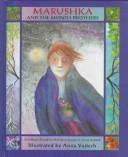
A retelling of the Slavic folktale in which the Month Brothers’ magic helps Marushka fulfill seemingly impossible tasks which prove the undoing of her greedy stepmother and stepsister.
Stretch, Swallow & Stare
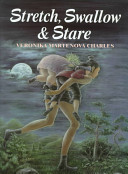
Stretch was not like other people. She could stretch her body taller than the tallest tree. People didn’t trust her because she was different. That’s why she lived in the forest. Swallow could eat more food than anyone. The villagers made fun of her because she was short and fat. That’s why she left town. Stare’s eyes were so strong they could burn through anything she looked at. Everyone was afraid of her. That’s why she stayed alone. And then there was Ira – small, skinny, and short-sighted – with nobody in the world to help him search for his missing sister. Somehow these four unlikely characters come together and overcome all obstacles – even the most evil magic in the land.
Fragments Of Memory
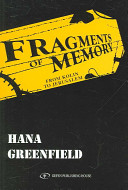
The extermination of Jews, political prisoners, homosexuals and other undesirables by the Nazis during the 1940’s is very well documented in hundreds of historical books, but without the eye witness testimony of the few who survived this period they become almost hollow.
In Fragments of Memory, Hana Greenfield relives the horrors of the European Jewish population, during what came to be known as the Holocaust, in spellbinding and horrifying detail.
She remembers family, friends and neighbors who were subjected to inhumane treatment, humiliation, hunger and brutality on a daily basis. She recalls horror, fear and sadness, but also brief and all too infrequent moments of hope and happiness, which are often followed by yet more despair.
Each story is well written in small, bite-sized chunks, and each can be read as a stand-alone piece or as part of the whole book, making it easy for the reader to dip in and out of the chapters as they please.
The sheer horror of Hana’s time in different camps, including the notorious Auschwitz, and the constant fear in which she was forced to live, is conveyed through these tales in a way that only one who had lived through it could deliver.
Golem
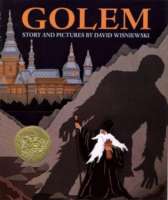
Retold from traditional sources and accompanied by David Wisniewski’s unique cut-paper illustrations, Golem is a dramatic tale of supernatural forces invoked to save an oppressed people. It also offers a thought-provoking look at the consequences of unleashing power beyond human control. The afterword discusses the legend of the golem and its roots in the history of the Jews.
A Caldecott Medal Book.
